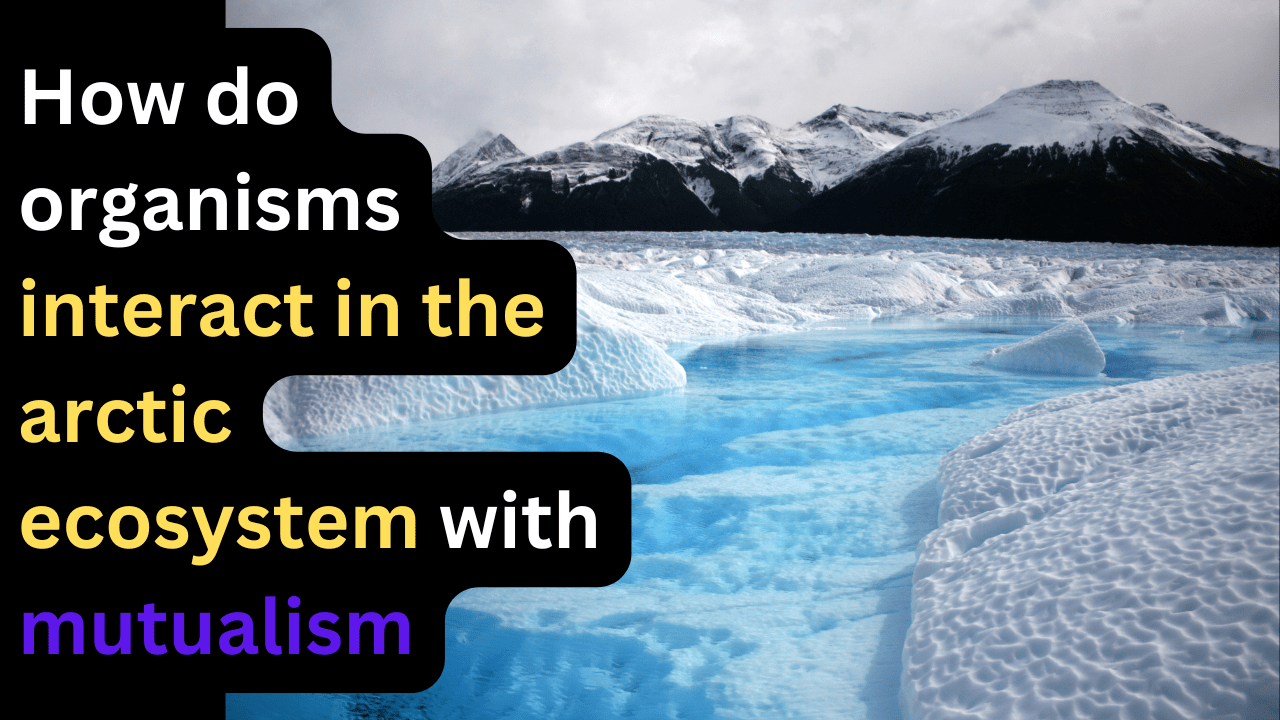In the Arctic ecosystem, mutualism plays a crucial role in helping organisms survive the extreme conditions. Mutualism is a type of symbiotic relationship where both species benefit.
Examples of Mutualism in the Arctic Ecosystem
- Lichens (Fungi and Algae/Cyanobacteria)
- Fungus provides structure, protection, and retains moisture.
- Algae or Cyanobacteria perform photosynthesis, producing food for both partners.
- This partnership is critical in the Arctic, where lichens are a primary food source for animals like caribou.
- Polar Bears and Arctic Foxes
- Polar Bears leave scraps from their kills.
- Arctic Foxes scavenge these remains, benefiting from a reliable food source.
- In return, foxes help clean up the area, reducing the chance of disease near the bears’ dens.
- Plants and Mycorrhizal Fungi
- Plants like Arctic willow form mutualistic relationships with mycorrhizal fungi.
- Fungi help plants absorb nutrients and water from the nutrient-poor, frozen soil.
- The plants give fungi with carbohydrates produced via photosynthesis.
- Sea Anemones and Hermit Crabs
- Hermit crabs in Arctic waters may host sea anemones on their shells.
- Hermit crabs gain protection as anemones deter predators.
- Anemones benefit by gaining mobility, which increases their access to food particles.
- Migratory Birds and Arctic Plants
- Birds like geese and sandpipers feed on Arctic plant seeds and fruits.
- They help disperse these seeds across the tundra, aiding in plant reproduction.
- Snowshoe Hares and Shrubs
- Shrubs like willow provide hares with food during harsh winters.
- In return, hares help prune the plants, encouraging healthy regrowth and preventing overgrowth.
- Clownfish-Like Interactions in Arctic Waters
- Fish species and sea anemones (in cold-water environments) form mutualistic relationships. Fish receive protection. The anemones feed on leftover food particles.
Importance of Mutualism in the Arctic areas
- These interactions improve survival chances in nutrient-scarce and harsh conditions.
- They maintain biodiversity and ecological balance in the fragile Arctic ecosystem.
